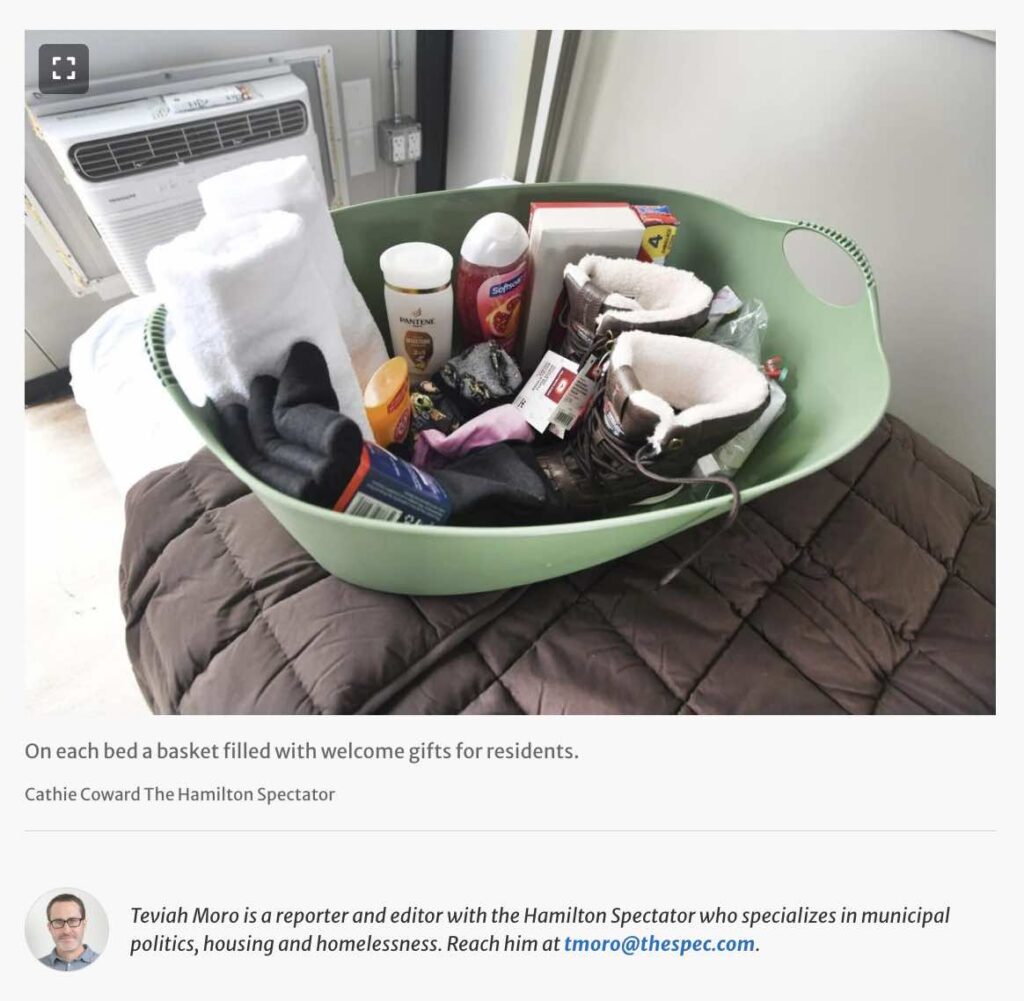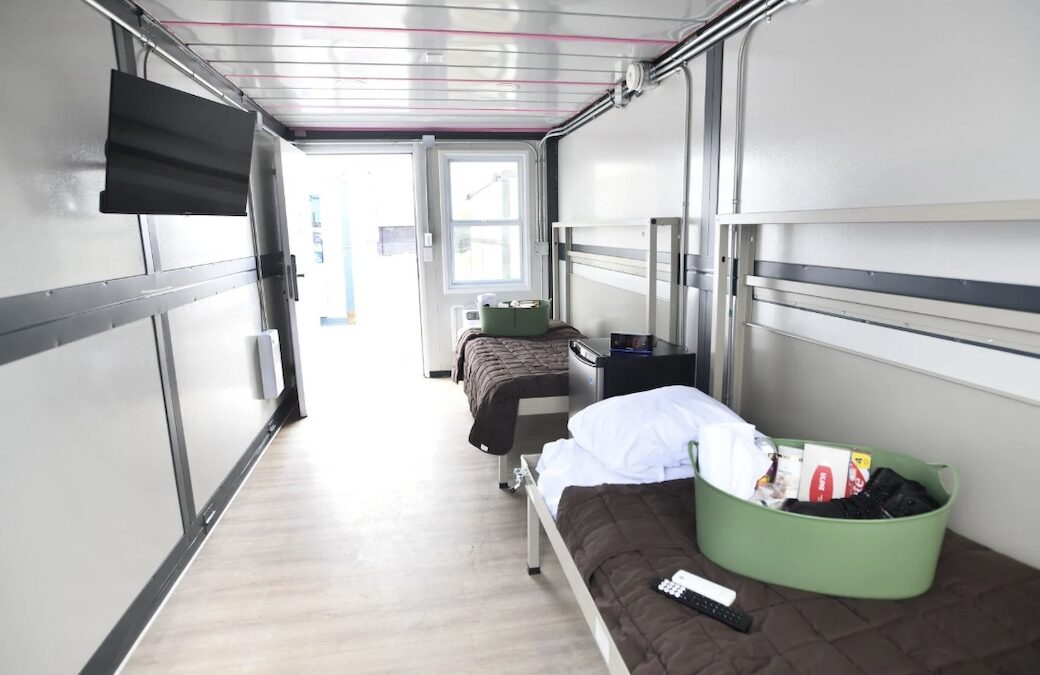Hamilton’s mini-cabin project has welcomed 19 residents — about a quarter of its potential capacity — and is expected to be fully occupied by the end of March.
That’s beyond her initial target of “before the snow flies,” Mayor Andrea Horwath said during a news conference at the Barton Street West temporary shelter site Friday.
But the effort to provide people living in tents with the 10-by-20-foot steel cabins and an array of services in a relatively short time has been a “remarkable” feat, Horwath said.
“It was a desperately needed space, and we’ve been building it literally up from the ground,” she said about the transformation of the city-owned brownfield — just south of the west harbour rail yard — into an outdoor shelter operation.
The city had aimed to open the site for up to 80 people in December, but setbacks, including the delayed delivery of the modular units from China and stalled construction due to Ministry of Labour orders, have slowed its launch.
The Good Shepherd-operated shelter initiative prioritizes people with pets and couples, two service gaps in Hamilton’s shelter system.
Not all of the 40 cabins, which can be divided into separate quarters by removable walls, are finished, but 19 people, including seven couples, five single occupants and five pets, were on-site as of Friday, city manager Marnie Cluckie said.
Through a phased move-in, the temporary shelter operation is expected to reach its full potential capacity of 80 people by the end of March, Cluckie noted.
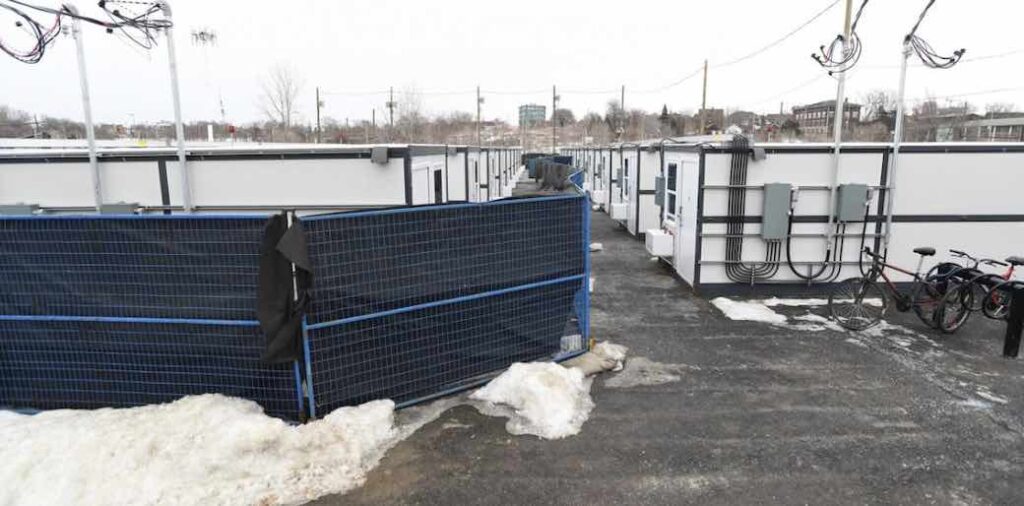 TinyHome Community in Hamilton. So far, 19 people are living in the community, which is expected to offer cabins for as many as 80 residents by the end of March.
TinyHome Community in Hamilton. So far, 19 people are living in the community, which is expected to offer cabins for as many as 80 residents by the end of March.
Cathie Coward The Hamilton Spectator
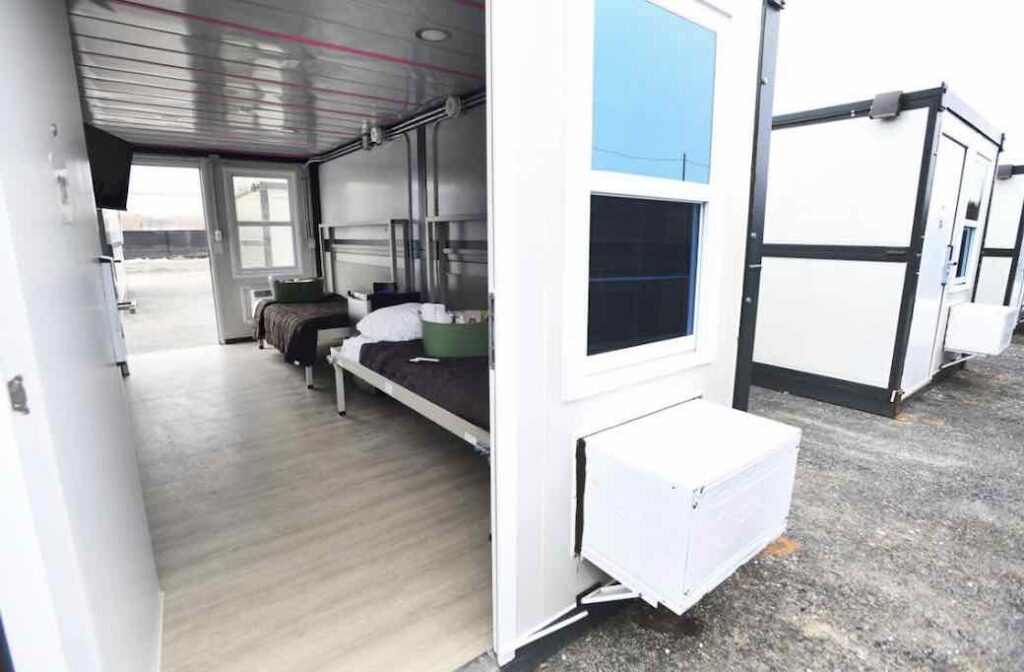 Each resident of the temperature-controlled cabins has a bed, television and small fridge. The site has washrooms, showers and laundry facilities. This double-cabin is meant for two people.
Each resident of the temperature-controlled cabins has a bed, television and small fridge. The site has washrooms, showers and laundry facilities. This double-cabin is meant for two people.
Cathie Coward The Hamilton Spectator
Meals are provided in a common area, where residents can congregate and receive a variety of services from on-site staff.
Those include health and mental-health care, addiction support and housing-focused case management, with the help of other agencies, including the Shelter Health Network and St. Joseph’s Healthcare Hamilton.
During Friday’s event, reporters were limited to a small section of the gated site and not given access to residents.
The lives of people in the nascent community have been marked by considerable trauma, violence and stigma, said Katherine Kalinowski, Good Shepherd’s chief operating officer.
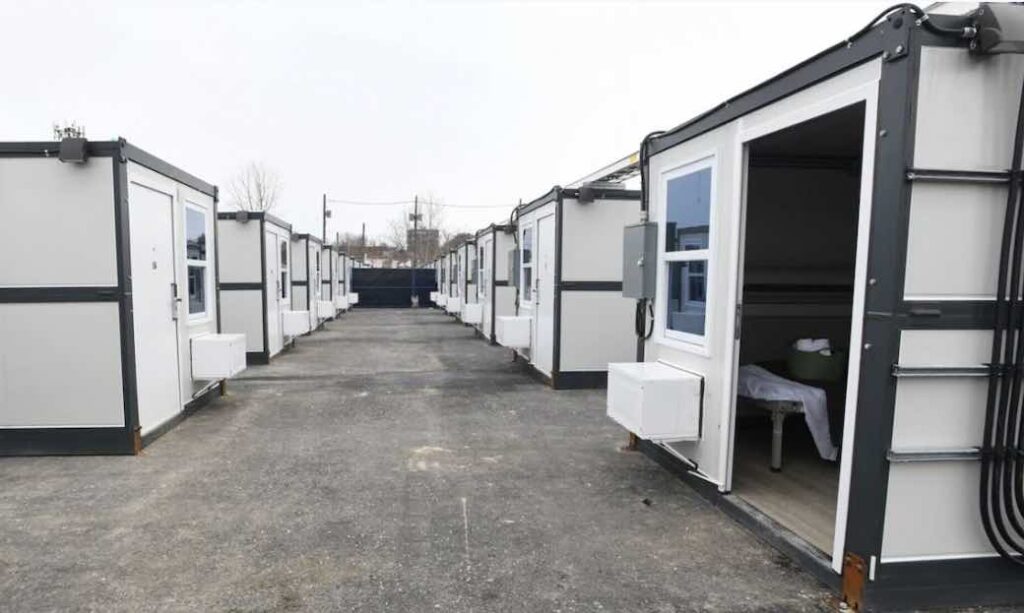 So far, 19 people are living in the community, which is expected to offer cabins for as many as 80 residents by the end of March. Cathie Coward The Hamilton Spectator
So far, 19 people are living in the community, which is expected to offer cabins for as many as 80 residents by the end of March. Cathie Coward The Hamilton Spectator
“And so this place is meant to be a safer haven. Our focus is helping people move from survival and subsistence toward finding a place to call their home in this community.”
Just being able to lock a door and sleep securely has already been “transformative” for residents who lived outdoors, Kalinowski said.
“This is giving people dignity back.”
But some prospective residents have been hesitant about moving in, she said, noting that wariness can be rooted in negative experiences with health-care, criminal-justice and shelter systems.
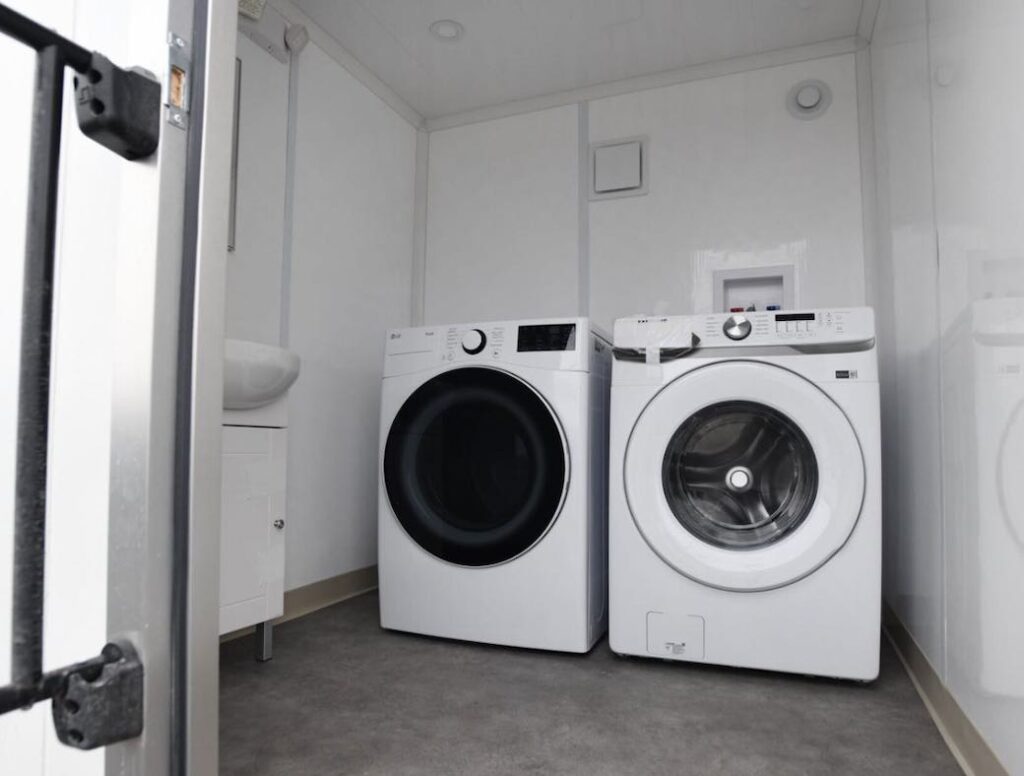 Residents at the outdoor shelter operation have washrooms, showers and laundry facilities.
Residents at the outdoor shelter operation have washrooms, showers and laundry facilities.
Cathie Coward The Hamilton Spectator
Of roughly 1,600 people who are homeless in Hamilton, about 200 are known to live outside, which is down from around 300 this past summer, the city says.
The 80-bed Barton project, along with the creation of 192 additional indoor spaces, springs from a directive Horwath issued to staff in August to draft a plan to get people out of parks by winter.
Putting 272 more beds into the mix, the two initiatives have made for “the largest expansion of our emergency shelter in over 20 years,” Cluckie said, “and it was done very rapidly.”
But transitioning the cabin residents to permanent homes is the ultimate solution, said Horwath, noting the city continues to press upper levels of government to help it create more affordable and supportive units.
Encampments in Hamilton have sparked public complaints, ranging from garbage to open drug-use and fires — as well as persistent calls to find lasting solutions for those without housing.
In January, council decided to scrap Hamilton’s encampment protocol which, since 2023, has allowed people to pitch tents in parks subject to certain restrictions.
The March 6 expiry of the policy and return to enforcement of a bylaw which bars tents in parks comes after a judge in December dismissed a Charter-based legal challenge over the city’s approach to encampments.
The delayed Barton initiative, meanwhile, has been the focus of public scrutiny, including over the city’s purchase of the modular units from China via a single-sourced Brantford-based contractor.
With questions of their own, city politicians in January asked staff for a review of the project’s procurement.
On Friday, Horwath acknowledged the rollout’s “challenges,” but suggested that’s the risk of trying something new.
“To innovate sometimes means you don’t get it right the first time … but you can make it right.”
Staff have estimated the mini-shelter project, including site work and other elements, would carry a one-time capital cost of $2.8 million. The annual operating tab has been estimated at about $4 million.
Asked Friday about costs, Cluckie said she didn’t want to “speculate” on the tally, noting staff would provide a public “reconciliation” of expenses in the future.
